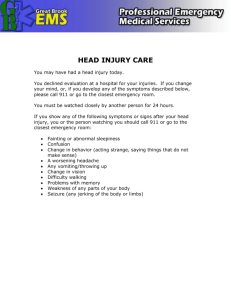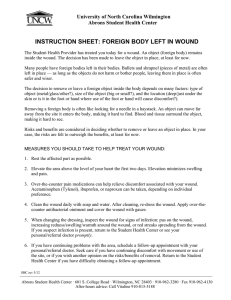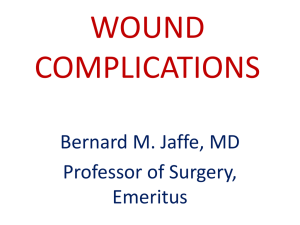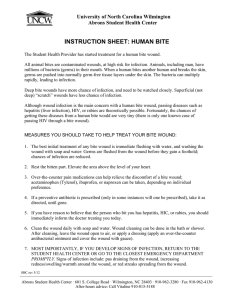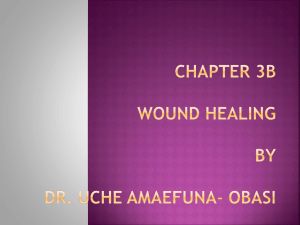Key Concepts
advertisement
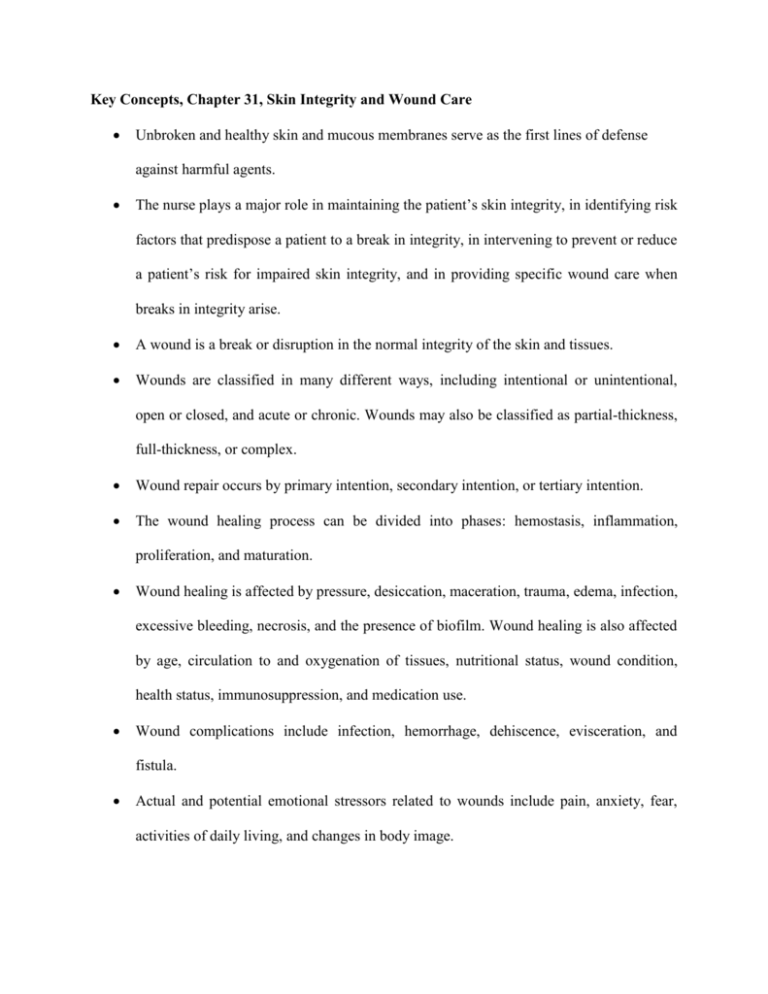
Key Concepts, Chapter 31, Skin Integrity and Wound Care Unbroken and healthy skin and mucous membranes serve as the first lines of defense against harmful agents. The nurse plays a major role in maintaining the patient’s skin integrity, in identifying risk factors that predispose a patient to a break in integrity, in intervening to prevent or reduce a patient’s risk for impaired skin integrity, and in providing specific wound care when breaks in integrity arise. A wound is a break or disruption in the normal integrity of the skin and tissues. Wounds are classified in many different ways, including intentional or unintentional, open or closed, and acute or chronic. Wounds may also be classified as partial-thickness, full-thickness, or complex. Wound repair occurs by primary intention, secondary intention, or tertiary intention. The wound healing process can be divided into phases: hemostasis, inflammation, proliferation, and maturation. Wound healing is affected by pressure, desiccation, maceration, trauma, edema, infection, excessive bleeding, necrosis, and the presence of biofilm. Wound healing is also affected by age, circulation to and oxygenation of tissues, nutritional status, wound condition, health status, immunosuppression, and medication use. Wound complications include infection, hemorrhage, dehiscence, evisceration, and fistula. Actual and potential emotional stressors related to wounds include pain, anxiety, fear, activities of daily living, and changes in body image. A pressure ulcer is a wound with a localized area of injury to the skin and/or underlying tissue. Most pressure ulcers develop when soft tissue is compressed between a bony prominence and an external surface for a prolonged period of time, or when soft tissue undergoes pressure in combination with shear and/or friction.





